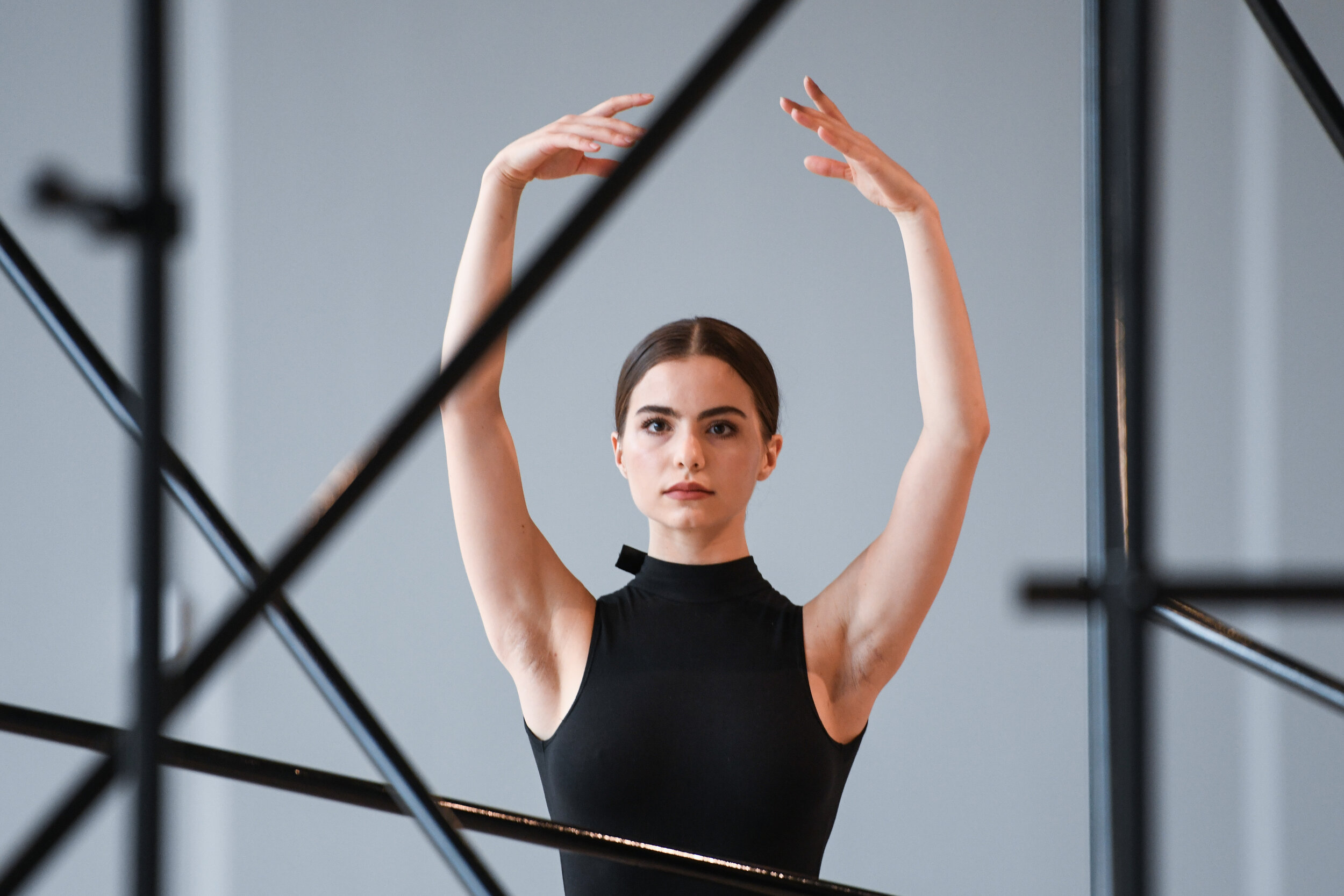Brendan Fernandes
coding and decoding the language of movement
In this edition of #SAIatHome we’re speaking with Brendan Fernandes, one of three jurors for South Asia Institute’s virtual exhibition Diasporic Rhizome (March 15 - May 15, 2021).
Brendan Fernandes is a multidisciplinary artist who examines issues of cultural displacement, migration, labour, and queer subjectivity through installation, video, sculpture, and dance. Born in Nairobi, Kenya to a Goan, Indian family, Fernandes was a dancer whose experience leaving dance due to an injury informs his current performance practice. Working in the intersection of dance and visual art, his pieces open up questions about hybridity of media and seek to problematize the notion of a fixed, essential or authentic identity.
In his newest work, he is returning to his past life as a dancer to investigate how movement techniques are recalled in the body via muscle memory and explore this phenomenon through cultural dance, ballet, and the languages that prescribe directions for dancers to move. Brendan shares his performance, “The Master and Form” from the 2019 Whitney Biennial in which choreography, as he understands it, is a tool for coding and decoding language of movement.
Photo credit: Kevin Penczak
Film by Spirit of Space
Can you give us the background of this performance and how it was conceived? What are you aiming to highlight through the physical language of queer laboring bodies?
“The Master and Form” was created out of my involvement with Ballet, and specifically the hierarchies in Ballet that devalued my body while I was formally training. Ballet is a pivot of western culture and there is a system and fetishistic criteria that the form applies to bodies. I experienced—and many of my collaborators have experienced—a kind of masochism that comes out of Ballet training. “The Master and Form” performance was a way of questioning and queering this. In the piece we invert the Ballet form by centering the labour and practices that are traditionally kept off-stage in the Ballet world. By looking at the space of body-preparation I am asking “how can we find new ways to support and accept “othered” types of bodies here?” In that, I am also bringing into question the ways that we labour as dancers and creating an opportunity for us to question how that labour might be valued differently when it is brought into the visible centre of the work.
What elements of your identity do you bring to your performances?
There’s many aspects of my identity that I bring to my performances. For me, the goal is always to question and dismantle the notion of hegemony—or the idea that there is one, authentic narrative. So I interject my own narrative as a South Asian, Kenyan, Canadian residing in Chicago to disrupt the idea that identity is monolithic or fixed. Through dance, I have also experienced many different subcultural identities from punk-rock to formal ballet and many queer spaces in between. So when I bring aspects of my identity to my work it is to disrupt and to challenge the colonial idea that identity is static. I believe that these things are not fixed, essential or bound to place, but that they are enacted, polyvalent and borderless.
How do you relate to dance and how does it inform your current practice?
Dance has been part of my life from a very young age. Whether it was social dancing at family gatherings or taking a formal ballet class, I have always used my body as a way to express myself socially and culturally. Today, I consider dance as a political tool. I see it as a way of bringing people together as an essential part of imagining new forms and new ways to exist. I also understand dance as a set of rules and techniques that control and inform how bodies move and come together. Both of these aspects of dance—gathering and controlling—are political in nature. For me, I am interested in how we can create critical mass and solidarity through these kinds of gatherings and group collaborations. This past year, experiencing the social effects of the COVID-19 pandemic, has challenged me to rethink the ways that gathering and collaboration is possible. I have had to shift the ways that I imagine moving together and how that can still create space for political change.
How do you envision the role of improvisation in bridging movement and space?
In my work, improvisation fosters a collaborative space. One that allows for choice and agency to be highlighted. My process with the dancers is often to work together to come up with a vocabulary of movements and then to hand over the freedom to the dancers to decide how they will piece these movements together in the live performances. The live works are often structured by tasks or time-frames that I choreograph, but the dancers have agency within that to make choices that will impact the experience of the piece. For me this is an important way to keep collaboration and agency alive within the works. Giving self-control to the dancers creates opportunity for exchange, collaboration and generosity to be witnessed within the live work. I think this creates a more generative experience for everyone involved.
Images courtesy of the artist and Monique Meloche Gallery, Chicago.
Photography by Matthew Carasella Photography.







